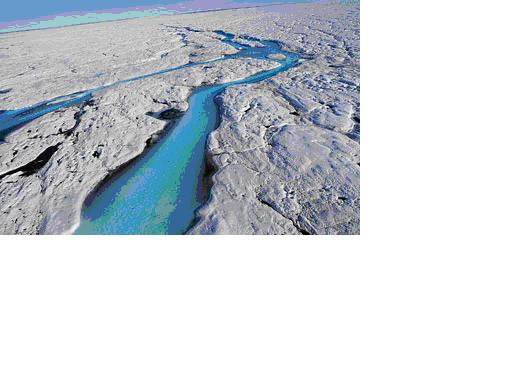UN World Water Development Report 2025
<p>For billions of people, mountain meltwater is essential for drinking water and sanitation, food and energy security, and the integrity of the environment. But today, as the world warms, glaciers are
<p>For billions of people, mountain meltwater is essential for drinking water and sanitation, food and energy security, and the integrity of the environment. But today, as the world warms, glaciers are

There is mounting evidence that climate change is triggering a shrinking and thinning of many glaciers world-wide which may eventually put at risk water supplies for hundreds of millions
It is thought, that the Northern Hemisphere experienced only ephemeral glaciations from the Late Eocene to the Early Pliocene epochs (about 38 to 4 million years ago), and that the onset of extensive glaciations did not occur until about 3 million years ago. Several hypotheses have been proposed to explain this increase in Northern Hemisphere glaciation during the Late Pliocene.
Climate change poses a serious threat to essential water resources in the Himalayan region putting the livelihoods of 1.3 billion people at risk, experts said Thursday. The mountainous region, home to the world's largest glaciers and permafrost area outside the Polar Regions, has seen rapid glacial melting and dramatic changes in rainfall, experts at the World Water Week conference in Stockholm said.

Rivers of melting ice form on the Sermeq Kujalleq Glacier in Ilulissat, Greenland, pictured in October 2007
By Thomas L. Friedman Jorgen Peder Steffensen made me an offer I couldn't refuse: "If you come to Copenhagen, I will show you a real Christmas snow, the snow that fell between 1 BC and 1 AD." Now that's an offer you don't get every day! But then I don't go to the Arctic Circle every day. "I can also show you a sample of the very last snow that fell right at the end of the last ice age, which was 11,700 years ago," said Steffensen.
Listening to the earth scientists at the Tallberg Forum speaking about the likely calamities caused by global warming, I had the sensation of entering a parallel universe. It is a universe where an adaptive and inventive human race has grown to over six billion people, created bountiful and rich civilisations built on fossil fuels, and has emerged as the most important specie to geologically alter the planet. Man-made greenhouse gas has placed the earth in a slow cooker. In this parallel universe, the phrase
Small changes in surface winds may have possibly played a substantive role in abrupt climate change during the last glacial period, says a study. The study, conducted by Complutense University of Madrid (UCM) and Potsdam-Institute for Climate Impact Research, Germany, concluded that there is a precise point from which a small variation in sea winds speeds corresponds to a dramatic change in the Atlantic circulation intensity.
Tapping energy or sapping the Himalayas -report by Chandi Prasad Bhatt, eminent activist and environmentalist A series of dams are being planned on the Ganga between the Gangotri glacier and Uttarkashi to generate hydropower. The government has an economic agenda that requires huge amount energy. Well, it can go ahead, but only after it has satisfied me on seven counts. There should be a detailed, in-depth study of the geology and the structures, by a team of scientists whose credential is proven and who should be inducted from reputed research organizations.
Jason 2 satellite will record role of oceans in climate change Jason 2, a French-U.S. satellite that will provide the most accurate monitoring ever of rising sea levels and track the effects of climate change, was launched into orbit from Vandenberg Air Force Base, California, on Friday. The liquid-oxygen-fuelled rocket sent an explosive arc of light into the night sky, some 256 km northwest of Los Angeles, as it launched the satellite on a three-year journey to track virtually the entire oceanic surface of Earth and extend the record of sea-level study from space to two decades.
One person was killed and nine others, including five foreign tourists, were injured when a part of the Gaumukh glacier moved and hit these persons near Gaumukh last evening. A team of the Uttarkashi police, forest personnel and rescue workers today reached the spot and carried the injured back to Bhojwasa for treatment. According to Uttarkashi SP Nilesh Anand Bharne, part of the Gaumukh glacier fell on tourists in the area killing a sadhu and injuring four American and one British tourists. Two tourists from West Bengal were also injured.